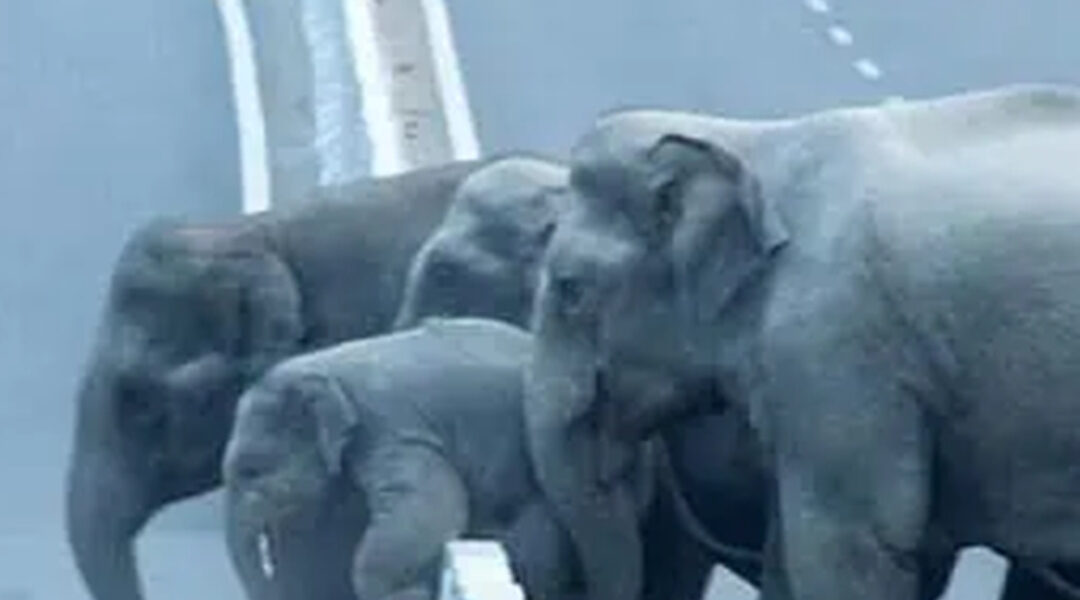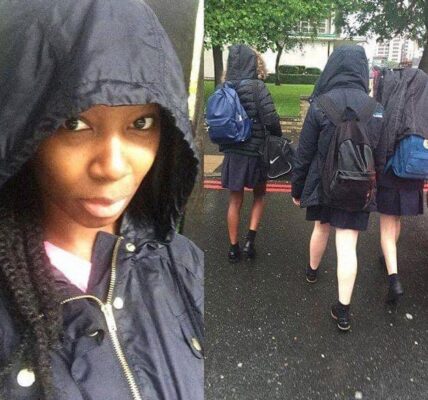On a hot afternoon in Tamil Nadu, traffic came to a sudden standstill. Cars, buses, and motorcycles stretched in long, frustrated lines, their engines silenced by something far more commanding than a red light. A herd of elephants — led by a protective matriarch — had decided it was time to cross.

Among them was a small calf, still learning the world beneath its oversized ears and unsteady legs. When the herd stepped onto the wide strip of asphalt, the little one hesitated. The road was unfamiliar, hard, and intimidating. Cars loomed on either side, and the distance seemed endless. For a moment, the calf froze, caught between fear and uncertainty.
That was when the mother leaned in, nudging her baby gently but firmly with her trunk. It was a push that spoke louder than words: Go on. I’m here.
The calf stumbled forward, guided by its mother’s steady presence, until at last it reached the safety of the far side. Watching from behind windshields and handlebars, people smiled at the tenderness of the moment. Yet as minutes turned into hours of waiting, frustration rippled through the crowd of stalled commuters.
What many saw as an adorable delay carried a heavier truth. This was not simply an elephant family crossing a road — it was a symptom of a growing crisis.
A Clash of Paths

Elephants once roamed vast forests, their migration routes stretching across southern India. But as towns expand, farmland spreads, and highways carve through green landscapes, those ancient paths have been blocked. With no choice, elephants wander into human spaces.
The Coimbatore region, along with Hosur and Gudalur, is home to nearly 700 elephants. Here, encounters like this one are becoming increasingly common. Sometimes they are peaceful — a herd crossing, a calf nudged along. Other times, they end in tragedy.
Each year, wildlife groups estimate that about 20 people lose their lives in elephant-related incidents in this area alone. The elephants, too, pay a heavy price: 10 to 15 are killed annually, struck by speeding vehicles or targeted by poachers when they stray too close to villages.
The problem isn’t confined to Tamil Nadu. In 2015, across India, human-elephant conflict claimed 391 human lives and 39 elephants in a single year. Behind each number lies a story of grief, of families and herds torn apart.
A Call for Coexistence

Wildlife activist Umesh Marudhachalam has seen these struggles up close. His words cut to the heart of the issue: “The problem is not with the animals; it is with humans. We have destroyed their habitat and encroached on their migration routes. What remains of these buffer zones should be preserved.”
Indeed, elephants are not invaders. They are travelers retracing ancient steps, paths older than the roads that now slice through their world. Blocking these routes forces them into conflict with people — trampling crops, damaging property, or wandering onto highways where tragedy often follows.
More Than an Inconvenience

That day in Coimbatore, drivers may have sighed at the delay. But for those who looked closer, there was a lesson in the quiet determination of a mother guiding her calf across the road. It was a reminder that these creatures are not intruders but survivors, adapting to landscapes that no longer belong to them.
The push of a trunk, the pause of traffic, the silence of hundreds of people watching — all of it pointed to a deeper truth: unless humans protect what remains of natural corridors, scenes like this will continue, sometimes with devastating consequences.
The baby elephant made it safely that day. But the bigger journey — the struggle for peaceful coexistence between humans and elephants — is far from over.





